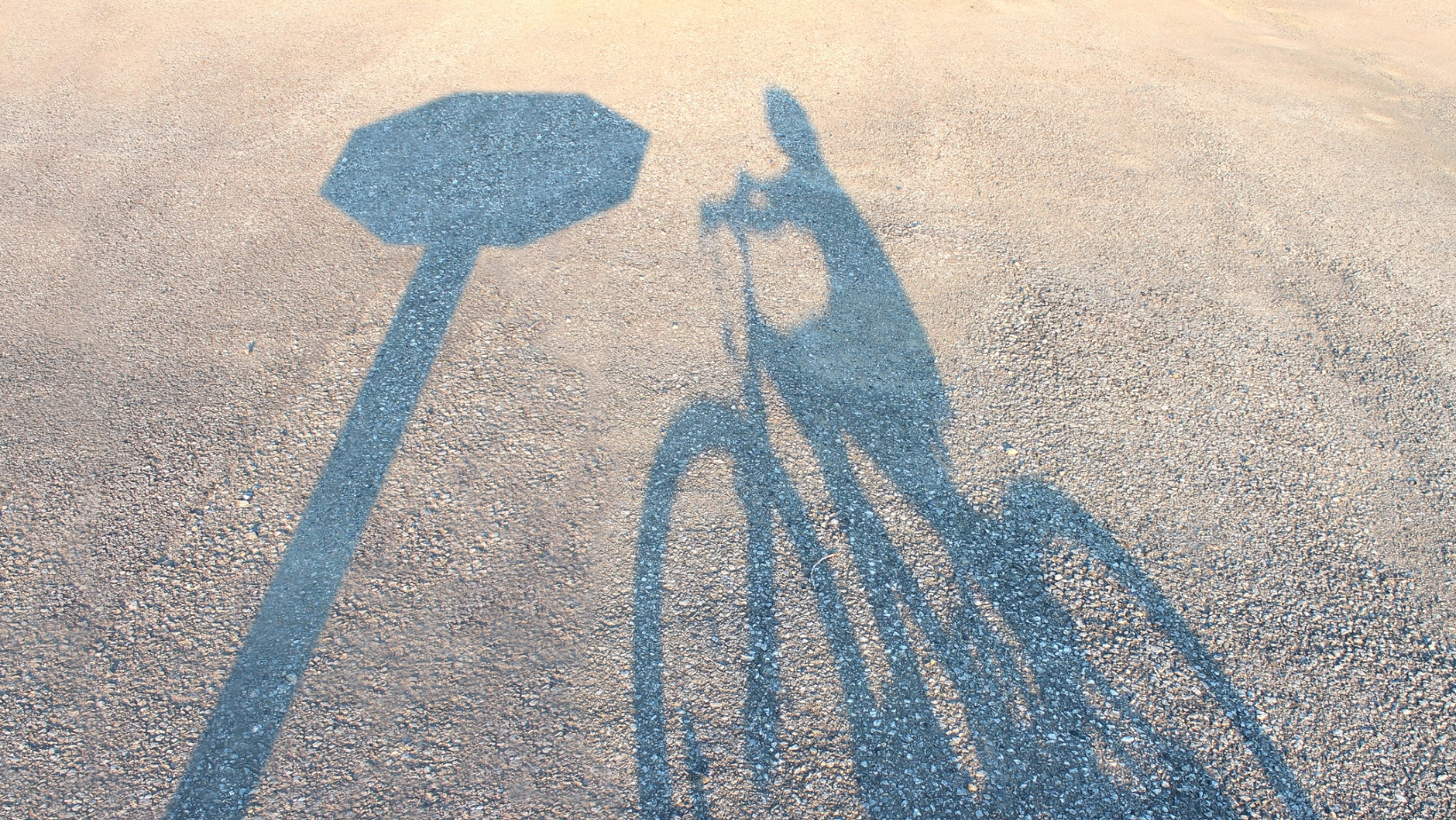
Learn About Florida’s “Share The Road” Partnership
Bicycle Traffic Law
Overview of Florida Laws for People on Bicycles
In Florida the bicycle is legally defined as a vehicle and the bicyclist is a driver. People riding bicycles have the same right to the roadways and, when in roadways, must obey the same traffic laws as the drivers of other vehicles.
These laws include:
Stopping for stop signs and red lights
Riding with the flow of traffic
Using lights at night
Yielding to pedestrians
Yielding the right-of-way when entering a roadway
If under the age of 16, always riding with a helmet
Important factors to remember:
Florida law allows people to ride their bikes on the sidewalk, however local municipalities can prohibit bikes from certain areas.
People riding electric bicycles (e-bikes) are subject to these same rights but also the same responsibilities.
Parents and guardians must make sure their children follow all bike laws.
Download the Pocket Guide for Informed Bicycling
The free pocket guide that Florida Bicycle jointly published with several partners aims to raise awareness of the rights of people bicycling and help make everyone safer. You can download the guide for free here.
Learn more about Florida’s Traffic Laws (F.S. 316.2065 and more) below:
Bicycle Regulations (see Section 316.2065, F.S.)
A bicyclist must obey all traffic controls and signals.
A bicyclist must use a fixed, regular seat for riding.
Every bicycle must be equipped with a brake or brakes which allow the rider to stop within 25 feet from a speed of 10 miles per hour on dry, level, clean pavement.
No bicycle may be used to carry more persons at one time than the number for which it is designed or equipped.
Parents and guardians must not knowingly allow a child or minor ward to violate any provisions of this section.
Sidewalk Riding (see Section 316.2065, F.S.)
When riding on sidewalks or in crosswalks, a bicyclist has the same rights and duties as a pedestrian.
A bicyclist riding on sidewalks or in crosswalks must yield the right-of-way to pedestrians and must give an audible signal before passing.
Check for local ordinances that may restrict bikes from riding on the sidewalk. Clues that this may be the case include sidewalk cafes and areas with a lot of foot traffic.
Lighting (see Section 316.2065, F.S.)
A bicycle operated between sunset and sunrise must be equipped with a lamp on the front exhibiting a white light visible from 500 feet to the front and both a red reflector and a lamp on the rear exhibiting a red light visible from 600 feet to the rear.
Cyclists may use flashing white front and/or rear red lights.
Additional lighting is permitted and recommended.
Blue lights are not permitted on any vehicle other than law enforcement vehicles.
Roadway Position (see Section 316.2065, F.S.)
A bicyclist who is not traveling at the same speed of other traffic must ride in a designated bike lane or as close as practicable to the right-hand curb or edge of the roadway.
What does “practicable” mean? It means “capable of being put into practice or of being done or accomplished.” There will be many times when it is not practicable to ride on the far right of the right lane due to the presence of hazards.
A bicyclist may leave the right-most portion of the road in the following situations:
When reasonably necessary to avoid any condition or potential conflict including, but not limited to, a fixed or moving object, parked or moving vehicle, pedestrian, animal, surface hazard, or turn lane
When a lane is too narrow for a bicycle and another vehicle to travel safely side by side
When passing another vehicle moving in the same direction
When preparing for a left turn
A bicyclist operating on a one-way street with two or more traffic lanes may ride as close to the left-hand edge of the roadway as practicable. Essentially, on a one-way street with multiple lanes, you can ride where you need to.
Persons riding bicycles upon a roadway or a bike lane may not ride more than two abreast except on a bicycle path.
Persons riding two abreast may not impede traffic when traveling at less than the normal speed of traffic and must ride within a single lane.
To avoid hazards in the roadway or to pass another cyclist, cyclists may temporarily ride side by side.
If a bike lane is wide enough to allow it, cyclists can ride side by side. This is a rare situation and typically you need to ride single file in a bike lane.
Left Turns (see Section 316.151 (1)(b)(c), F.S.)
A bicyclist intending to make a vehicle left turn is entitled to full use of the lane from which the turn is made. This means if there is a left turn lane and you need to make a left turn, you can (and should) use the left lane.
After scanning, signaling, and moving to the center of that lane, the bicyclist must check the signal, then proceed when it is green and safe to do so.
In addition to the normal vehicle left turn, a bicyclist may proceed through the intersection, then adjust direction to proceed in the new direction. This means persons riding a bike can move to the sidewalk to change directions once clear and safe to do so.
Signaling Turns (see Sub-section 316.155(2) and 316.157(2), F.S.)
Cyclists must signal that they intend to make a turn within 100 feet of the turn.
If you need both hands on your bike for control, you do not have to continually signal.
To signal a left turn, extend the left hand and arm horizontally to the left.
You have two options for signaling a right turn: extending the left hand and arm upward or by extending the right hand and arm horizontally to the right.
Headsets (see Section 316.304, F.S.)
A bicyclist cannot wear a headset, headphones, or other listening device (other than a hearing aid) when riding.
F.S. 322.12(5)(d) does allow cyclists to have one earbud in, so long as sounds can be heard through the other ear.
If you ride with your hearing obstructed in any way, you risk not being able to hear vital information to keep you and others safe.
Local Ordinances
The local governments of counties, cities, towns, and other municipalities can adopt ordinances regulating bicycle riding and e-bikes. Some towns may also have registration and licensing ordinances. Sidewalk riding may be prohibited entirely or only in certain areas such as business districts. Local law enforcement agencies are the best resource for local ordinances.
Operation on Limited Access Highways (see Section 316.091, F.S.)
No person shall operate a bicycle on a limited access facility, except as otherwise provided. No person shall operate a bicycle on an interstate highway.
Electric Bicycles (see Section 316.20655, F.S.)
In Florida, there are three classes of e-bikes:
Class 1 electric bicycles have a top speed of 20 miles per hour, and the electric motor works only when the rider is pedaling.
Class 2 electric bicycles have a top speed of 20 miles per hour, but they have throttles and do not require the rider to pedal.
Class 3 electric bicycles have a top speed of 28 miles per hour, and the electric motor works only when the rider is pedaling.
Other important notes about e-bikes in Florida:
Your e-bike must have a permanent label indicating what its class is.
You do not have to have a license, vehicle registration, or insurance to drive an e-bike, as defined above.
If the e-bike is modified to go faster than intended, you must update the label indicating what class of e-bike the modified e-bike falls under. Modifying your e-bike may void the warranty or disqualify it as an e-bike as defined by Florida law.
Local governments and state agencies can set rules restricting where you can ride your e-bike. Check local ordinances before heading out.
For more information or to ask questions about Florida Bicycle Laws, visit flbikelaw.org.
The Pocket Guide for Informed Bicycling was jointly published by Florida Bicycle Association, the Space Coast Transportation Planning Organization and Bike/Walk Central Florida, with funding support from New Belgium Brewing.













